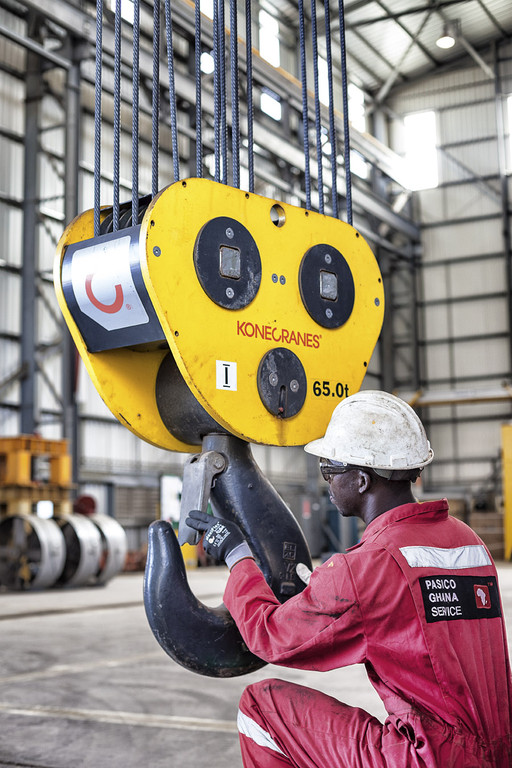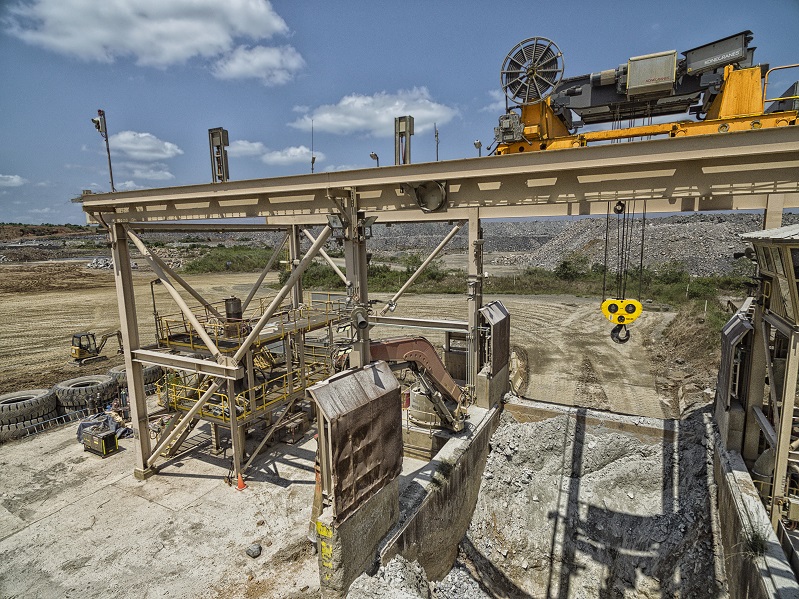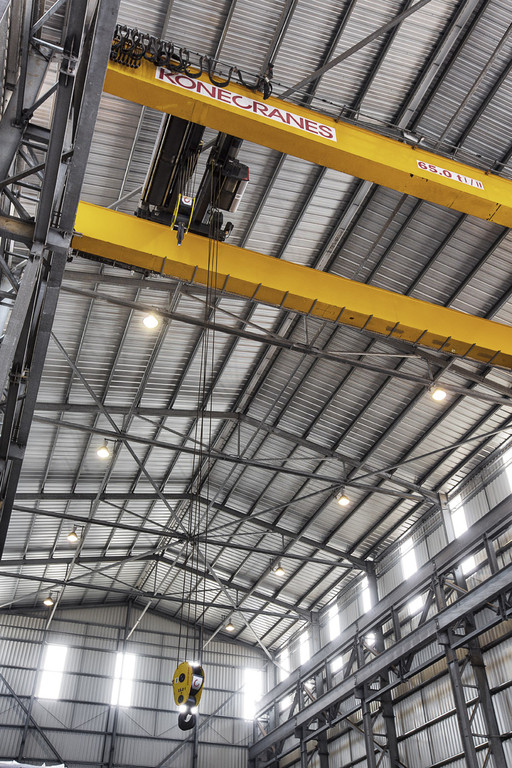OVERHEAD CRANES AND HOISTS: HOW TO DETERMINE THE TYPE & FREQUENCY OF INSPECTIONS YOUR CRANE NEEDS
As there are various types of inspections, it’s important to understand which type your equipment requires.
Compliance inspections
Regularly scheduled crane inspections can save companies great expense by verifying compliance with local regulations and highlighting safety and production issues. Paterson Simons offers many types of inspections that are designed to meet local regulatory requirements. The LOLER Statutory Inspection has been designed to inspect equipment for deficiencies and deviations as defined in the local statutory safety and health regulations set forth for a periodic compliance inspection. A Paterson Simons trained, and qualified inspector will perform the inspection and give recommendations for repair, replacement, adjustment, or calibration. Paterson Simons will provide an inspection report that fulfils local statutory requirements.
Here are the various types of inspections offered by Paterson Simons:
- Initial Inspection: (may also be referred to as PDI – Pre-Delivery Inspection / Post-Installation or Commissioning Inspection)
We inspect equipment for deficiencies and deviations from manufacturer recommendations and applicable standards that may cause a risk to the safe use of your equipment. Typically required before a new crane is taken into use, or if a crane is taken into use after being out of operation for a long period of time, moved to another location or if there has been a major modification in crane structure or components.
- LOLER Statutory Inspection: (also known as a Periodic Inspection)
We inspect equipment for deficiencies and deviations as defined in the local statutory safety and health regulations set forth for a periodic compliance inspection. Frequency is determined considering crane usage, operating environment and statutory requirements and should not be longer than one year.
- Frequent Inspection:
Inspections are done on the safety-critical components of equipment between periodic inspections and planned maintenance visits. Daily inspections done by the operator can also be classified under frequent inspections.
- Major Inspection:
We inspect equipment for deficiencies and deviations from manufacturer recommendations and applicable standards that may cause a risk to the safe use of your equipment. This is usually carried out after the first 10 years of service.
- Electrical Inspection:
Visual inspection is done as well as operational and functional tests of the electrical components of the equipment.
- Mechanical Inspection:
Visual inspection as well as operational and functional tests of the mechanical components of the equipment.
- Designed Working Period (DWP) Calculation:
An estimate of the accumulated duty of a crane and assessment of its remaining life.
- Load Testing:
Verifies that equipment is capable of lifting and moving the rated load through all designed motions. The load test has also been designed to meet local statutory requirements for load testing and the frequency of this test should not exceed 12 months.
- Non-Destructive testing/examination – NDT / NDE:
NDT is part of a broad group of structural or material inspections. As the name implies, these inspections do not destroy the material/structure being examined. Our NDT technicians and engineers define and implement tests such as Liquid Penetrant, Magnetic Particle or Eddy-current that are used to locate and characterize material conditions and flaws that might otherwise go undetected.
Non-Destructive Evaluation (NDE) covers the assessment of the significance of any defects found, both terms are often used interchangeably.
- Slings and Accessories LOLER Inspection:
The Slings and Accessories Inspection has been designed to inspect non-serviceable load-lifting attachments and accessories. The inspection identifies deficiencies and deviations from Lifting Operations and Lifting Equipment Regulations 1998 and is performed by trained and qualified service personnel. The inspection interval should not be longer than 6 months unless in accordance with an examination scheme written for this equipment.
- Preventive Maintenance Inspections:
Preventive maintenance inspections help fulfil local regulatory requirements for maintenance. Having an annual compliance inspection does not make you compliant. Regulations in most countries and industry best practices require much more. Regulations often require preventive maintenance, repairs to address deficiencies, lifetime inspections, general overhauls, engineering evaluations and load tests. Paterson Simons offers both compliance and preventive maintenance inspections and can provide one, or both, depending on your local requirements.
- Condition Monitoring:
Most modern cranes are equipped with advanced electronics which are easily integrated with condition monitoring hardware and software.
Through a series of sensors, metrics of temperature, vibration, noise, viscosity, electricity, and alignment to name but a few can be measured and compared to benchmark conditions, thus enabling equipment owners and users to monitor equipment performance and condition in real time to help predict strategic maintenance interventions in advance.
- Inspection Schemes: (also known as an Examination Scheme)
Following an initial assessment and any one of the inspections performed above, a Written Scheme of Examination can be drawn up by a competent person. This Examination Scheme would clearly define the scope of items or components within the system to be Examined as well as the type, range and frequency of the examination, measurement or check to be done. Inspection Schemes may contain one or several of the inspections mentioned above.
It is a good idea to establish a working relationship with a provider of crane inspections who will work with you to develop a comprehensive plan of preventive maintenance, scheduled repairs and crane modernizations. With a coordinated program, companies can maintain a fully functional, safe, reliable, and compliant operation.
From the maintenance of process and industrial cranes to the maintenance of mobile equipment, Paterson Simons sell and service fully rated heavy duty Konecranes industrial cranes that are engineered to deal with the heat and humidity of West African mine and manufacturing sites.
Our overhead crane engineers are located on-the-ground in Nigeria, Ghana and Togo and service the wider region from Mauritania and Senegal to Cameroon and Guinea. Our overhead crane engineers are factory-trained and are experts in the commissioning and installation of overhead cranes. We offer crane certification, overhead crane operator training and inspections across the West African region.

We sell and service fully rated heavy duty Konecranes industrial cranes

A Konecranes Overhead Crane for the oil industry in Ghana

A Konecranes Overhead Crane for the oil industry in Ghana


